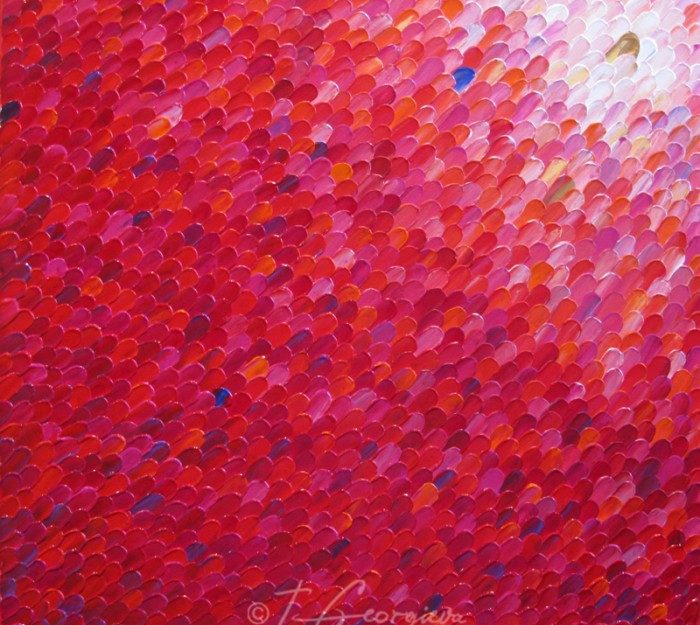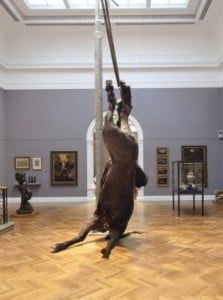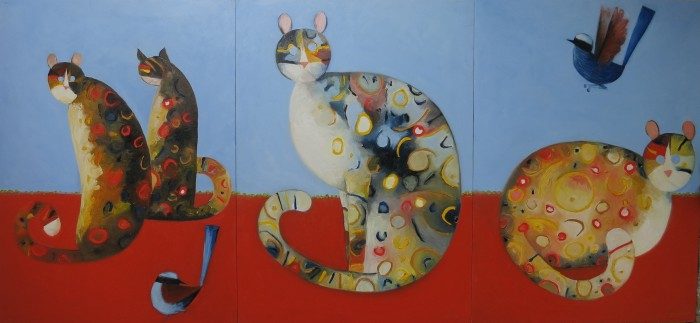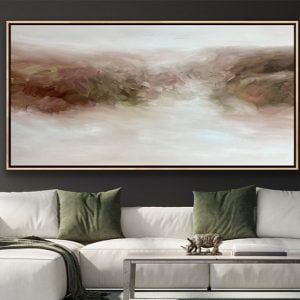5 top tips for buying artwork from emerging artists
1. Buy what you love
You can probably stop reading this post here, because this is the only thing you need to remember (nah, keep reading). You’ve got to love what you’re buying. Art is an abstract concept; we don’t need it to live, but we do need it to live well. An artwork should make you feel something, preferably something good every time you look at it, because the objects in your home and office affect your subconscious. If you don’t believe me, just ask a feng shui consultant.
Beware buying something you don’t like just because the artist is the “next big thing” and it will be a good investment. Even if you follow all the best advice, your chosen artwork may not gain in value in your lifetime, so if a blood-smeared horse carcass in your living room is going to make you want to sell your house, then maybe choose something else.

Maybe try something a little more to your taste, like a Loui Jover piece here on bluethumb
2. Buy what you can afford
You shouldn’t give up on your dream of owning an art collection just because your budget is the size of a postage stamp and you can’t afford the millions it supposedly costs to own good art. If you choose wisely and search out talented new and emerging artists, you can buy beautiful works of art for just a few hundred dollars. Sometimes smaller pieces are more affordable, and it’s better to buy one small piece from an artist you love than a work the size of Clive Palmer’s Titanic II that’s only so-so.
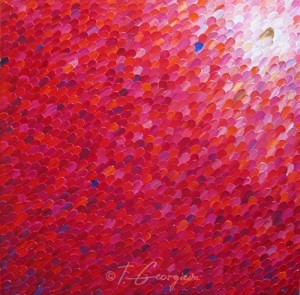
This beautiful piece from Tatiana Georgieva, called Feathers, will set you back just $360.
3. Buy direct from the artist
Until recently, if you wanted to buy a work from a brilliant but unknown artist, you would have to get out the GPS, drive to Mullumbimby or some other God-forsaken place, trek through the jungle, knock on the door of a house made of seaweed and wrest the work of art from the hands of a protective, mad genius who insisted on telling your fortune before handing it over.
Perhaps I exaggerate. But you’d at least have to get yourself to a gallery, and often by the time an artist is well-known enough to be exhibiting in a gallery their work is too expensive for the average collector. And who knows how many brilliant artists live in remote places and don’t have the marketing nous to nab gallery representation early in their careers?
Now that you can buy art online from galleries like Bluethumb, you can buy directly from the artist (without needing a GPS or a snake-handler) and find so much more hidden talent all over Australia. You’ll be supporting an artist to make a living, and you’ll get fantastic art for much lower prices.

You don’t need to go trekking through snow in Poland to buy art by Anna Zygmunt. It’s on bluethumb.
4. Do a little research
This is optional. If you don’t have the time or inclination to read art magazines, go to exhibitions or talk to people in the art world, simply ignore this step and go back to step 1 – just buy what you love. But if you do have time and you’re looking to buy art as an investment, then frequenting smaller, contemporary art galleries and reading current art publications will help you know what to look for in emerging artists’ work and what trends are gaining speed.
When you find a piece of art that you like, do some research on the artist’s background and see what the rest of their art is like. You should look to buy art from committed, working artists who have found their “voice” – that is, they have a particular style and their work looks distinctly “theirs”. Artists who are still experimenting will often have a collection of quite random, eclectic works that don’t seem to tie in together. It doesn’t mean they don’t have great potential as artists, it just means that buying from them is a little more of a risk if you’re looking for an investment. You want an artist who’s going to stick at it their whole life so that your chosen work will rise in value, not one who changes their mind next year and becomes a lawyer instead.
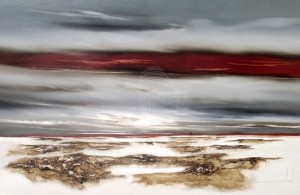
Katherine Wood, for example, is a full-time artist with a distinct style and an impressive body of work.
5. Map your collection
What kind of collector will you be? Will you choose just one or two artists and buy up several pieces of their work at once? Will you be eclectic, buying a little at a time – a sculpture here, an oil painting there, a glowing shark in a fish tank for good measure? There are no rules, but it’s good to have an idea in advance of what your priorities are, art-wise.
If you’re on a budget, it’s best to save up for a piece you really want than to buy two or three that you only half-love. You’ll regret missing the one you wanted and you’ll always regard the inferior two you bought with a scowl. Art should be a long-term commitment, kind of like a tattoo (minus the lasers required to get rid of it, but with the potential for a return on investment. Okay, it’s not really like a tattoo).

Maybe you love landscapes. You could collect one by Sally Hollis…

…then try an Anna Henderson…

…and top it off with a Sue Bannister.
There’s no reason to wait. Start your collection now.

